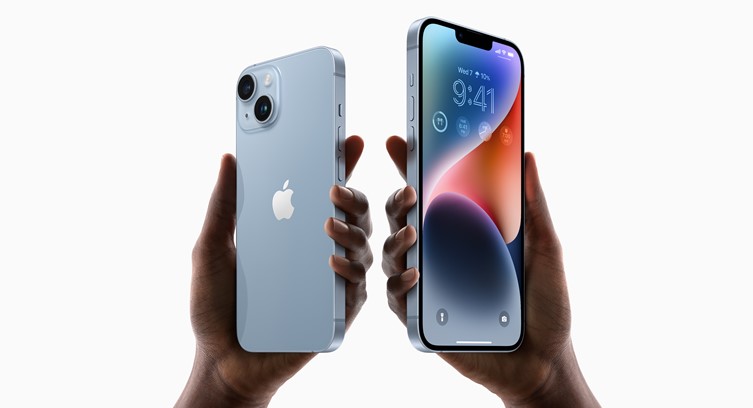Apple, last Wednesday, introduced users to its latest iPhone models, the iPhone 14 and iPhone 14 Plus. Equipped with satellite connectivity capabilities and IOS 16, the iPhone 14 is the second eSIM-only smartphone in the world, and will no longer include a physical SIM card for US models. eSIM (embedded SIM) technology allows users to easily connect or transfer their existing plans digitally and have multiple cellular plans on a single device. It is also touted as more secure than smartphones requiring physical SIM cards. In a recent research study by Amdocs, 32% of consumers agreed that the ability to switch providers and plans instantly was a major benefit of eSIM while 21% were excited at the prospect of not having to buy a physical SIM card.
Industry comments
Commenting on the iPhone 14's eSIM-only feature, Anthony Goonetilleke, Group President of Technology and Head of Strategy at Amdocs, said:
“Apple’s decision to introduce an eSIM-only version of the iPhone 14 represents a watershed, game-changing moment for seamless connectivity. We’re already seeing momentum towards eSIM across the telecoms sector and we expect this to grow as consumers, original equipment manufacturers (OEMs) and communications service providers increasingly realize the full scale of the next-generation experiences and possibilities unleashed by this exciting new technology. On the consumer front, we at Amdocs recently found that - even before today’s announcement - 81% of consumers were either actively in favor or open to the idea of an eSIM-only future for smartphones, while 58% wanted their mobile operator to integrate eSIM into their offering. These numbers will only increase after today. Apple’s influence and reach is such that this could be the tipping point for the eSIM revolution.”
Luc Vidal, Head of M2M/IoT Business at BICS, further added to the potential benefits offered by eSIM, commenting:
"Integrating an eSIM into the iPhone is a logical move, allowing customers to digitally activate or change service plans in a matter of minutes, without having to receive a physical SIM card or visit a store in person. It also means that customers can have multiple numbers linked to their device, which can be from different operators and serve different purposes. For example, one for personal use, one for travel abroad and one for business.
“eSIMs make it easier to change providers which will create healthy competition to improve network performance and customer service. As the technology becomes more widely adopted, we will see general service levels improve across the telecom industry.
“Consumers that go abroad a lot may find it cheaper and easier to access a local operator via an eSIM and benefit from local rates rather than roaming with their main provider. It will also provide businesses with this same level of flexibility for employees that have to travel abroad.
“The telecoms industry is already working on the next step beyond eSIM, iSIM, which is effectively an invisible software solution that is integrated into the processor of a device and will save even more space, power and make it easier to manufacture more connected devices for the internet of things.”
With regard to the satellite connectivity capabilities offered by the iPhone 14, Joe Hogan, CTO of 5G and Network at Amdocs, said:
The just-announced satellite capabilities from Apple, as well as T-Mobile and SpaceX’s announcement of smartphone satellite connectivity coming next year, are both milestone moments for the communications industry. While they are both small steps toward a world where consumers have a constant connection wherever they are, regardless of network, it sets the stage for future innovations that can close the digital divide and further improve our society. Essentially, we’re moving to a world of ubiquitous connectivity. Expect this to be an area of great interest in 2023.
“When it comes to various kinds of connectivity, every aspect has its pros and cons. For instance, 5G may not be strong in all locations, and satellite broadband isn’t as cost-effective. By collaborating and creating a collection of the ‘best of both’ worlds, consumers and businesses will only benefit. A seamless end-to-end customer experience will be a critical piece of the puzzle when coming or going from these various networks. Artificial intelligence and network governance will become increasingly important in managing this.”
The views expressed in this commentary belong solely to the author and do not represent The Fast Mode. While information provided in this post is obtained from sources believed by The Fast Mode to be reliable, The Fast Mode is not liable for any losses or damages arising from any information limitations, changes, inaccuracies, misrepresentations, omissions or errors contained therein. The heading is for ease of reference and shall not be deemed to influence the information presented.




















